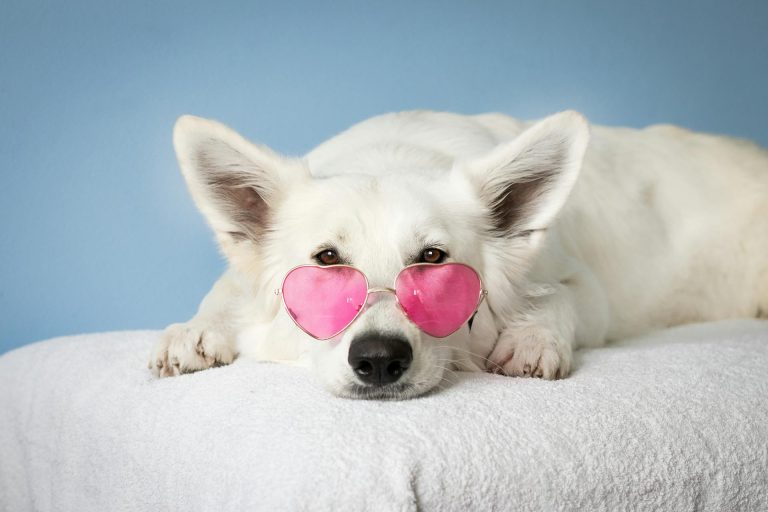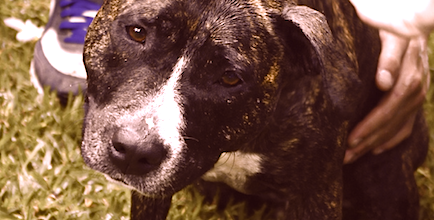Shampoo as Therapy for Your Dog’s Bad Skin
Talk to your vet to see how you can nip your dog’s itchy skin in the bud.

From skin allergies to scurf and a greasy coat, skin health has a big impact on the appearance of your pet. We all love the look and feel of a soft, silky coat, but when allergies cause hair thinning and inflamed skin, the reality becomes different from the dream.
For example, if your dog is itchy, scratching means disturbed nights. Then, they don’t understand that chewing is harmful and licking creates open sores.
So how can you get on top of the problem?

Don’t leave your pet’s safety to chance
Sign up for Petful recall alerts today.

Get Help for Bad Skin
A poor coat is a symptom rather than a diagnosis. Thus, get your dog checked by a vet and those underlying health conditions sorted out. Treating that underlying hypothyroidism, Cushing’s disease, demodex infection or flea bites could resolve the root cause.
While a good diet and medication treat the skin from the inside out, grooming and coat care tend to it from the outside in. Regular brushing stimulates the skin’s circulation, improves hair growth and gets rid of shed hair. And bathing helps clean the skin and can feed nutrients into the hair.
Shampoos can make a big difference, but only if they have the right ingredients. Just because the product comes in a bottle, smells like strawberries and lathers up well doesn’t mean it’s the right shampoo for your dog. The trick is to identify your dog’s needs (such as adding moisture or removing skin scales) and select the right formulation.
Rule 1: Use Pet Shampoo
Yes, you’ve heard it all before, but that’s because it matters. Human skin is more acidic (pH 5.5) than dog skin (pH 7.5).
Human products are balanced to be sympathetic to an acidic scalp, whereas that same shampoo is too harsh for a dog. This leads to stripping away of conditioning oils, dryness and irritation — not good.
Rule 2: Understand the Skin’s Needs
What’s up with your dog’s skin?
If they’re itchy, the chances are their skin is dry or they have an overgrowth of yeast or bacterial infection. If they’re greasy to the touch or have flaky skin, then they may have seborrhea, a condition where the oil glands or skin cells are overactive and grow through too fast.
Some problems require a medicated shampoo prescribed by your vet. But if this is the case, look on it as treatment rather than an expensive add-on sale. Not convinced? Then check out why medicated shampoos contain what they do.

Decoding the “Treatment” in Medicated Shampoos
Check out the active ingredients to find out how they benefit your dog.
Adding Moisture
For a dog with dry skin, adding moisture helps condition and improves its resilience.
This can be done by adding a layer of oil on the surface (such as olive oil, coconut oil, almond oil or paraffin products) or by drawing moisture into the skin cells. The latter are called humectants and tend to have chemical-sounding names such as lactic acid, urea or propylene glycol.
Soothing the Itch
Natural products such as oatmeal and aloe vera definitely have a place for soothing irritated skin.
- Oatmeal: It’s thought oatmeal works by inhibiting chemicals in the skin, called prostaglandins, which cause inflammation. The beneficial effect of an oatmeal bath can last 2 days.
- Aloe vera: This natural wonder contains salicylic acid and magnesium lactate. These decrease inflammation by inhibiting prostaglandins and histamine release.
Some prescription shampoo contains pramoxine. This is a topical local anesthetic to numb and soothe skin affected by an intense itch.
Battling Bugs
A healthy skin keeps bacteria in check. But skin battling an allergy is weakened, which allows bacteria and yeast to grow. This sets up infection, which is itchy in turn, and so starts the downward spiral.
Shampoo with an antimicrobial can be cheaper than long courses of antibiotics — and potentially healthier for both the dog and your pocket. Ingredients to look out for include:
- Chlorhexidine: This does it all — kills bacteria, viruses and fungi. It also has a lingering action and protects the skin for 48 hours after a bath.
- Ethyl lactate: This works by lowering the skin’s pH. In theory, this sounds like it should irritate the skin, but in practice, it rarely does.
- Benzoyl peroxide: This is one of the big guns of the shampoo world. It has a “follicle flushing” action, meaning it gets right into the hair follicles to give them a deep clean. Great news if there are pesky parasites such as demodex hiding there.
- Chloroxylenol: Another skin disinfectant, this can kill some real nasty bugs (such as the MRSA family) in as little as 15 seconds of contact.
- Miconazole: Excellent against skin yeasts.
This funny Westie can’t get enough of bath time:

Getting Rid of Grease
For those dogs with overactive grease glands, traditionally sulfur shampoos or tar shampoos were the answer. However, these are increasingly hard to get a hold of, and other formulations have come forward to replace them.
- Salicylic acid: Hydrates while breaking down grease and scale.
- Zinc lactate: Helps regulate skin cell turnover time, resetting it from hyperactive to normal.
Who knew there were so many benefits to a bottle of shampoo?
So next time your vet suggests a medicated shampoo, know that it’ll benefit your pet and save you money in the long run.
This pet health content was written by a veterinarian, Dr. Pippa Elliott, BVMS, MRCVS. It was last reviewed Sept. 22, 2017.







